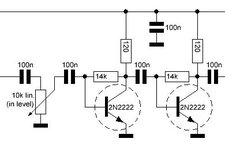What is the input impedance of this HF preamplifier?
- Thread starter neazoi
- Start date
Similar threads
-
What is the Big advantage of parasitic inductance in RF Trace?
- Started by Zebra123
- Replies: 10
-
SA612 (NE602) driven by 3KHz LO, what is the phase relationship of the sidebands?
- Started by neazoi
- Replies: 4
-
How to determine the impedance of a transmission line
- Started by Pixelx
- Replies: 9
-
what is wrong to cause the high insertion loss for hmc641LC4?
- Started by saulbit
- Replies: 6
-
[SOLVED] What is the accepted power of a two port antenna?
- Started by jujuChenYi
- Replies: 6



